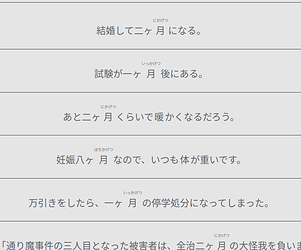I’m sorry to say this, but I see strong indications that you haven’t thought this through well enough. It seems to me that you have had writers write thousands of example sentences while ignoring some fairly major pedagogical problems with how they are going to be used.
Great example sentences for grammar only use vocabulary and concepts that the reader already knows and connects them together in a manner such that the only new part is the grammar. That reduces the overall cognitive load on the reader and allows them to focus solely on the grammar. These sentences are ones the reader could actually put to use in fairly short order.
Great vocabulary example sentences are very different. They have a very simple grammatical structure. For the most part, when they introduce a word, the other words in that sentence have already been introduced, or they are not essential to the overall meaning of the sentence. This makes the relation of the new word to other words stick out. It also makes the example sentence be one that the user could put to use once they have learned that new word.
Great reading practice combines vocabulary and grammar. It is just not isolated sentences, but text where one can see a topic flow from one sentence to the next in a manner that helps one understand the overall context and keeps one engaged.
I don’t think the Bunpro example grammar sentences are great. Too often, they use words and kanji that the reader doesn’t understand. Consequently, the user has to use the English translation as a crutch to understand the words in the sentence, understand its overall meaning, and then to backtrack into inferring the grammatical structure of the Japanese sentence. That’s unnecessarily convoluted and indirect for teaching purposes. I think Bunpro is successful >>in spite of<< the difficulty of its grammar example sentences.
The best vocabulary sentences I have seen to date are in the core 6K deck. They are not quite great because they completely ignore the kanji dimension of Japanese, but they are grammatically simple, the vocabulary is simple, and they demonstrate usage of frequently collocated words.
Your stated goals with your example sentences are to combine grammar and vocabulary, and, I am sorry to say, I think that is not the most effective source for learning either grammar or vocabulary I’d also argue that they also don’t make for very interesting reading practice either…
Don’t get me wrong, I think it is a great idea to connect together grammar and vocabulary. For example, if one sees words in a grammar example that one doesn’t understand, it would be great to add it to a vocab deck.
I just think that you need quite different example sentences that are designed for that purpose and are much closer to the core6K sentences than what you currently have. The fact that you don’t have translations available for the example sentences makes it even more important that all the other parts of the sentences be very simple.
Here are a few concrete examples to illustrate my point:
- 辞書
core6K: 彼女[かのじょ]は 辞書[じしょ] をよく 使[つか]います。
Bunpro N5: 家に辞書が三冊ある。
Bunpro N5: この辞書はとても古いです。
Bunpro N4-N2: Too hard for an N5 student.
It is more useful to learn to say how to use a dictionary than it is to learn how to count them or say that they are old.
- 帽子
Core6K: 帽子[ぼうし]を 被[かぶ]って 外出[がいしゅつ]した。
Bunpro N5: この帽子はいくら?
Bunpro N5: その帽子かわいいね。
Bunpro N4-N2: Too hard for an N5 student.
The Bunpro example sentences do not help one understand what is being talked about. The core6k sentence includes the frequently collocated 被[かぶ], but it also includes the unnecessarily difficult 外出[がいしゅつ].
- 嫌い
Core6K: 私[わたし]はタバコが 嫌[きら]いです。
Bunpro N5: 私は虫が嫌いだ。
Bunpro N5: あなたは野菜が嫌いですか。
Bunpro N4-N2: Too hard for an N5 student.
All example sentences are pretty good.
In all cases, the Bunpro N4 and up sentences are too difficult for an N5 student to use when learning these words. If you provided, say, 5 example sentences at the N5 level and 3 at the N4 level each N5 word, I would say you’d have something very useful.
Eventually, you’ll write example sentences for N3 and N2 words. If they are as long as the N3 and N2 example sentences you have produced thus far, then I wouldn’t want to use them for learning vocabulary. They are simply too long and convoluted. Again, great vocab sentences are not the same as great grammar sentences which are also not the same as great reading practice.
Of course, I have completely ignored the kanji dimension, but if you intend to get into vocabulary, you can’t ignore it. Right now, Bunpro tends to be very kanji heavy. However, the entire N5 level only contains 100 kanji, and Genki 1 only teaches 145. Students need a gradual exposure to kanji without being overwhelmed. Of the sites I have seen, I think Satori reader does the best with kanji by supporting a range of controls for kanji (including a custom import list, which is what I need  ) plus the option to use hiragana with spaces between words.
) plus the option to use hiragana with spaces between words.


